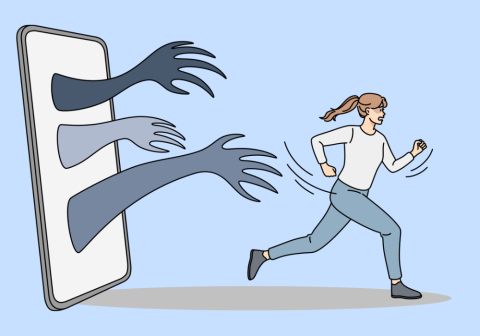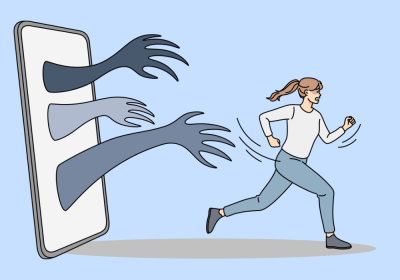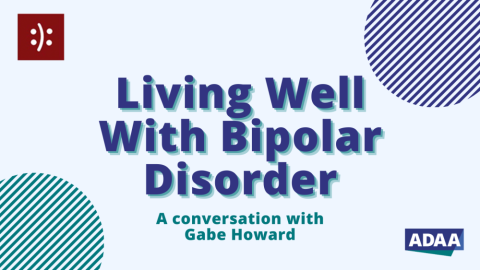Body Dysmorphic Disorder (BDD)
- Understanding BDD
- Symptoms & Related Disorders
- Treatment
- ACT with CBT
- Resources
Jessica, 16, is overly concerned with the size of her head. She believes it is larger than the average person’s head. She goes out of her way to camouflage her head by wearing glasses and her hair down. In public she is convinced that others are staring at her and reacting with disgust. As a result of her preoccupation and her distress, she avoids school and socializing and prefers to spend her days in her room.
Jessica suffers from body dysmorphic disorder, often referred to as BDD, which is a preoccupation with an imagined or slight defect in appearance.
Treatment
Cognitive-behavioral therapy, or CBT, is the first line of treatment for BDD. This type of treatment typically involves a technique known as exposure and response prevention (ERP).
In BDD, exposure aims to decrease mirror checking, camouflaging, and other compulsive behaviors. It is also intended to prevent behaviors such as avoiding social situations. CBT is effective, but some people with BDD fail to respond. Some improve slightly, and some are unwilling to participate in ERP. For these reasons, it is useful to consider a different approach in conjunction with CBT.
Acceptance and commitment therapy, or ACT, is one such treatment. ACT focuses on tolerating thoughts and symptoms, rather than trying to change, dispute, and generate alternative interpretations to problems. People with resistant BDD may benefit from ACT because it teaches how to tolerate anxiety-provoking situations.
This type of therapy incorporates the core concepts of mindfulness, acceptance, and value-based living.
- Mindfulness: Developing the ability to be present in the moment and the ability to observe without making judgments.
- Acceptance: The ability to distinguish between pain and suffering and being able to tolerate and live with pain.
- Value-based living: The ability to live according to your values and not your symptoms; living fully now instead of waiting to reduce your symptoms
Mindfulness
The mindfulness aspect of ACT entails learning skills that aid in accepting thoughts and feelings. In the case of BDD, you practice the acceptance of thoughts such as “I have a big head” and feelings such as “I am unlovable.” This is achieved by engaging in a variety of mindfulness exercises such as taking a silent walk and simply observing thoughts, feelings, and sensations as they come up. Mindfulness allows you to realize that you can experience many events but that you are never defined by these events.
Acceptance
Many people with BDD experience intense feelings of suffering as a result of their preoccupation. In moments of struggle they avoid and try to control unpleasant thoughts. ACT helps them ride out moments of suffering and struggle.
First it addresses your willingness to experience common symptoms such as unwanted thoughts, images, and situations. Next comes the introduction of the idea that unpleasant internal stimuli are not as harmful as you assume.
With time, you will learn more flexible ways to respond to stressful thoughts that decrease suffering and struggle. ACT focuses on changing your reaction to triggers such as thoughts about your head instead of changing your thoughts about it.
Some people with BDD also suffer from depression. ACT aims to differentiate between a label and a thought.
Label: “I am depressed.”
vs.
Thought: “I am having the thought that I am depressed.”
This helps you learn the difference between a thought and a sense of self. In ACT, it is important to be aware that we are not our thoughts. This process assists in decreasing the emotion attached to such thoughts.
Value-based Living
The third component of ACT involves value-based living. For many with BDD, their appearance is their only value. ACT helps identify other values, which can serve as guides to live your life. Clarification of values involves distilling urges and feelings to see what is truly meaningful to you.
For example, someone with BDD might appear to value appearance, but values-clarification exercises might reveal that the true values are human connectedness with corresponding desires to be loved and wanted. Therapeutically, this value can be pursued in ways that de-emphasize the importance of attractiveness. Part of this component includes an agreement to live life for its values and not for symptom reduction. In turn, this increases commitment to living a healthy life and assists in commitment to therapy.
Conclusion: A Meaningful Existence
ACT treatment goals include living a meaningful existence according to your values, focusing on the present moment, and tolerating emotions. It is clear that including ACT with CBT serves to increase the acceptance and motivation to engage in treatment.
Agnes Selinger, PhD, Southwestern Vermont Consortium
Fugen Neziroglu, PhD, ABBP, Director, Bio-Behavioral Institute















